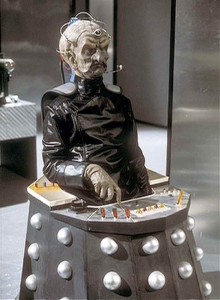 In the previous “Man as Machine” (Trains Pt 1) Tarquin O’Flaherty introduced us to Isambard Kingdom Brunel who built the Great Western Railway from London to Bristol.
In the previous “Man as Machine” (Trains Pt 1) Tarquin O’Flaherty introduced us to Isambard Kingdom Brunel who built the Great Western Railway from London to Bristol.
Tarquin O’Flaherty continues:
There were also great names of the railway age such as Samuel Moreton Peto and Thomas Brassey, who formed companies especially to build a particular stretch of railway. Brassey was probabably the most successful of these contractors.
In 1854, and seven miles from the Crimean port of Balaclava, 30,000 British soldiers, commanded by Lord Raglan, and a much bigger French army, were laying seige to the Russian stronghold of Sevastopol. Raglan was there, not because of his competence as a soldier, but because of his position in society. Consequently the relatively easy task of taking the target was fouled up by insane dithering which allowed Sevastopol to be reinforced. The Crimean winter closed in and roads from the port became impassable. Soldiers began to freeze to death for lack of food and winter clothing.
When word of this got back to England, Peto, now an MP, in partnership with Brassey, offered at cost, to ship from England to the Crimea enough materials and men to build a double rail line from the Port of Balaclava to the English positions at Sevastopol. This was a bargain too great to refuse.
Brassey had finished the Paris- Rouen railway in 1843, using his own gangs of British navigators, or ‘navvies’, who were absolutely loyal to him. He paid double and triple wages, fed his men very well and completed vast projects in very short periods of time. Peto had adopted the same methods with the same results. The possibility of working in freezing conditions in Russia didn’t faze the navvies at all. Brassey, a couple of years earlier had shipped 3,000 navvies to Canada from England to build the 500 miles of rail between Quebec and Lake Huron. Local French-Canadians, unused to the level of work demanded were physically incapable of the sustained effort required because of their poor diet. It was estimated that it would take a labouring newcomer at least a year, on a regular meat and vegetable diet, to begin to approach the level of fitness required of a navvy.
It took 23 ships to transport the navvies to Balaclava. At the same time, at Southampton, ‘the wounded, the blind and insane…’ the army remnants of the Crimean Battle of Inkerman were disembarking.
With the navvies went surgeons, nurses, engineers, clerks and tea boys. Portable huts for accomodation and administration, cranes, picks, shovels, crowbars, trucks, portable stoves, everything necessary so a man could eat, drink and properly clothe himself, before going out to work.
Then came 1,800 tons of rails, 6,000 sleepers, 600 tons of timber and at least 2,000 tons of fixed engines, wagons, barrows, trucks and all of the other paraphernalia necessary to building seven miles of double rail lines.
When everything was landed, the navvies set to right away. Astonishingly, within the first ten days they built not only their own accomodation huts, but five miles of track as well. In a letter home, a Captain Clifford observed;
‘…the navvies work famously and do more work in a day than a regiment of English soldiers do in a week…’
William Russell, correspondent of the Times, who had alerted England to the plight of the army, came back to his home to find his courtyard demolished and a railway line running across it. A huge tree had been pulled down, destroying his balcony, breaking his windows and smashing the roof. Was it for this he spoke disparagingly about the navvies?
In all, nearly thirty miles of track were laid to accommodate various points in the army lines.
This work was done extraordinarily quickly, with perhaps less care than would have been used in less troubled times and conditions. The orders were to finish the job as fast as possible as mens’ lives were at risk. The navvies started and finished the work, in the bitter Crimean winter, in just over two months. This included all of the necessary embankments, bridges, cuttings and earthworks. This amazing achievement, with the navvies working night and day, was estimated, shortly after completion, to have already carried a quarter of a million tons of food, 1000 tons of ammunition, and another 3,600 tons of normal army supplies. These goods were initially pulled by horses, as well as by stationary engines using cables, and finally by locomotives shipped out from Britain. The armies were rejuvenated and Sevastopol fell in September, 1855.
TO BE CONTINUED

Pingback: Man as Machine – Trains Pt 3 | pcbycp
Pingback: Man as Machine – Trains Pt 4 | pcbycp